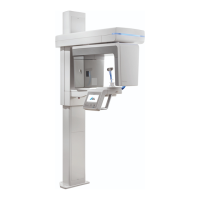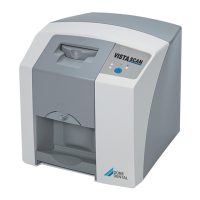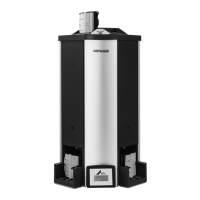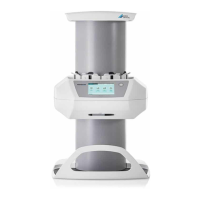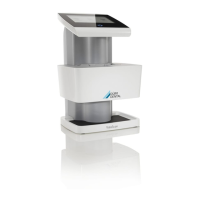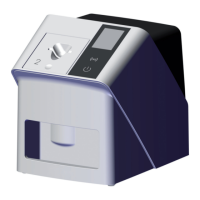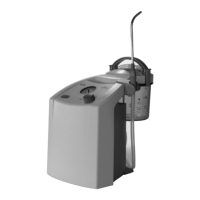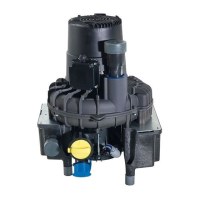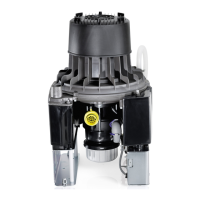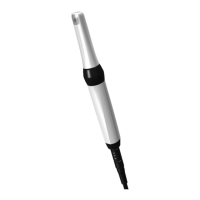
Do you have a question about the Durr Dental VistaCam iX and is the answer not in the manual?
| Type | Intraoral camera |
|---|---|
| Manufacturer | Durr Dental |
| Image Sensor | CMOS |
| Resolution | 1280 x 1024 pixels |
| Focusing | Automatic |
| Light Source | LED |
| Connectivity | USB 2.0 |
| Compatibility | Windows |
Details warning symbols and their meanings to highlight risks of injury or damage.
States that content is protected by copyright and requires authorization for reproduction.
Defines the primary function of the intraoral camera and its interchangeable heads.
Outlines the applications of the camera system in various healthcare facilities and practices.
Specifies prohibited uses and disclaims liability for damages resulting from misuse.
Lists the diagnostic and communicative uses for each interchangeable head type.
Identifies conditions or situations where the camera or specific heads should not be used.
Provides overarching safety guidelines and compliance requirements for unit operation.
Advises on safe practices when connecting the unit with other equipment to prevent risks.
Defines the required qualifications for operating and maintaining the device.
Covers electrical safety regulations, cable integrity, and EMC considerations.
Emphasizes the importance of using Dürr Dental approved parts to ensure safety and performance.
Provides guidance on proper packaging and handling during transport to prevent damage.
Outlines the proper disposal procedures for the unit in compliance with EU directives.
Lists the items included in various package configurations of the VistaCam iX system.
Details the essential accessories required for the operation of the device.
Presents additional articles that can be used with the VistaCam iX unit.
Identifies materials that are consumed during operation and need to be reordered.
Highlights components that require regular replacement and where to find information.
Presents electrical specifications, classification, and EMC test results for the handpiece.
Provides technical specifications for the Cam interchangeable head, including illumination and optical data.
Details technical specifications for the Macro interchangeable head, including illumination and optical data.
Lists technical data for the Proof interchangeable head, focusing on illumination and wavelength for caries detection.
Provides technical data for the Proxi interchangeable head, including light source and wavelength for caries analysis.
Specifies the operating and storage conditions for temperature, humidity, and air pressure.
Describes the information found on the handpiece's type plate, such as order and serial numbers.
Confirms the device meets EU conformity requirements and has undergone acceptance testing.
Explains the function and features of the Cam interchangeable head for intraoral imaging.
Details the Macro interchangeable head for close-up intraoral images and its LED arrangement.
Describes the Proof interchangeable head's function in detecting caries, plaque, and calculus using fluorescence.
Explains the Proxi interchangeable head's use for creating black and white images for approximal caries detection.
Describes the function of the handpiece holder and how it interacts with the camera.
Guides users on connecting the camera to a computer using the USB cable and required software.
Details the storage box for protecting interchangeable heads from dirt and scratches.
Provides instructions for mounting the handpiece holder, including fastening methods.
Explains the initial connection of the unit, emphasizing accessible ports and power supply.
Outlines the necessary computer system specifications for optimal operation of the device.
Details the procedure for performing electrical safety checks and documenting their results.
Step-by-step guide on how to safely remove and attach interchangeable heads to the handpiece.
Instructions for powering on the camera system by connecting it to the computer.
Provides detailed instructions on the correct application and disposal of the disposable hygienic cover.
Guides on how to correctly place the spacer onto the interchangeable head before use.
Explains the process of capturing images using the Cam and Macro heads, including setup and distance.
Details how to capture images with the Proof head, covering preparation, imaging, and view modes.
Provides instructions for capturing images with the Proxi head, including positioning, lighting, and analysis.
Describes the procedure for safely switching off and storing the camera after use.
Explains the importance of risk analysis and classification for medical products before reprocessing.
Details the validated reprocessing steps for the device components according to EN ISO 17664 standards.
Outlines the necessary preparations for the operator and the device at the point of use.
Provides comprehensive instructions for the manual cleaning, disinfection, and drying of the device.
Covers risk analysis and classification for accessories like the spacer prior to reprocessing.
Details the validated reprocessing steps for the spacer according to EN ISO 17664 standards.
Outlines the operator and spacer preparation steps at the point of use before reprocessing.
Provides detailed instructions for manual cleaning, rinsing, disinfection, and drying of the spacer.
Describes the automated process for cleaning and disinfecting the spacer using a washer-disinfector.
Explains how to check components for cleanliness and moisture after reprocessing cycles.
Details the requirements and procedures for steam sterilising the components.
Covers the documentation process for clearing sterilized parts for renewed use.
Provides guidelines for the proper storage of sterilized components to maintain asepsis.
Instructions on how to clean the camera's optical window and image sensor using specialized cleaning sets.
Guidance on cleaning and disinfecting the storage box and its internal shelf to maintain hygiene.
Addresses issues with cloudy or milky images, providing causes and solutions.
Troubleshooting steps for images that appear too dark, related to handpiece or lighting.
Guides on resolving issues where no image is displayed, checking connections and software.
Troubleshooting for camera vibration without a stationary image, focusing on head detection.
Provides solutions for blurred images, related to incorrect resolution settings in the software.
Specific troubleshooting for the Proof head, addressing color rendition and light penetration issues.
Specific troubleshooting for the Proxi head, covering lighting, shadows, and image clarity.
